Marius Stan
H2PIPE: High throughput CNN Inference on FPGAs with High-Bandwidth Memory
Aug 17, 2024
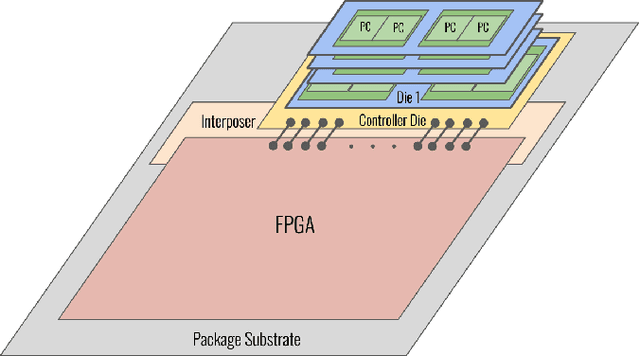
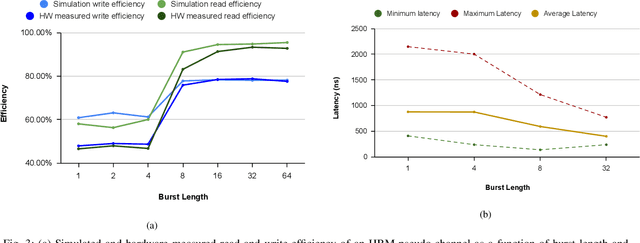
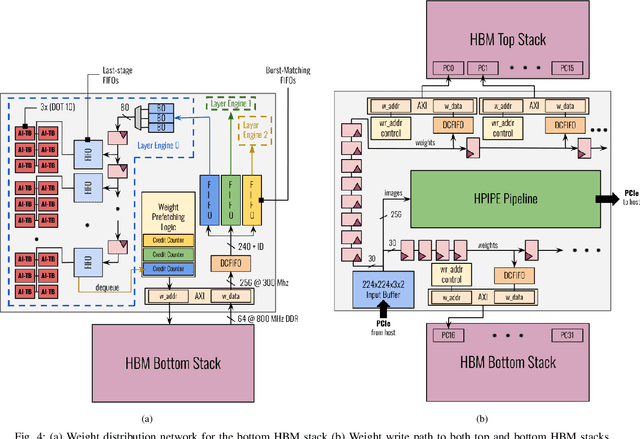
Abstract:Convolutional Neural Networks (CNNs) combine large amounts of parallelizable computation with frequent memory access. Field Programmable Gate Arrays (FPGAs) can achieve low latency and high throughput CNN inference by implementing dataflow accelerators that pipeline layer-specific hardware to implement an entire network. By implementing a different processing element for each CNN layer, these layer-pipelined accelerators can achieve high compute density, but having all layers processing in parallel requires high memory bandwidth. Traditionally this has been satisfied by storing all weights on chip, but this is infeasible for the largest CNNs, which are often those most in need of acceleration. In this work we augment a state-of-the-art dataflow accelerator (HPIPE) to leverage both High-Bandwidth Memory (HBM) and on-chip storage, enabling high performance layer-pipelined dataflow acceleration of large CNNs. Based on profiling results of HBM's latency and throughput against expected address patterns, we develop an algorithm to choose which weight buffers should be moved off chip and how deep the on-chip FIFOs to HBM should be to minimize compute unit stalling. We integrate the new hardware generation within the HPIPE domain-specific CNN compiler and demonstrate good bandwidth efficiency against theoretical limits. Compared to the best prior work we obtain speed-ups of at least 19.4x, 5.1x and 10.5x on ResNet-18, ResNet-50 and VGG-16 respectively.
Towards Online Steering of Flame Spray Pyrolysis Nanoparticle Synthesis
Oct 16, 2020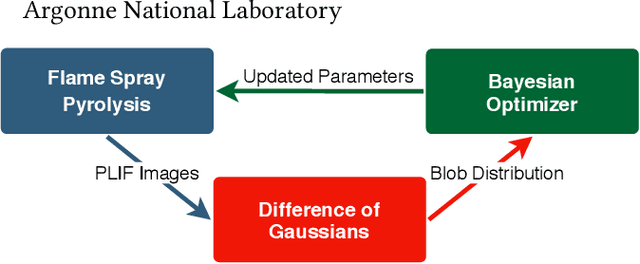
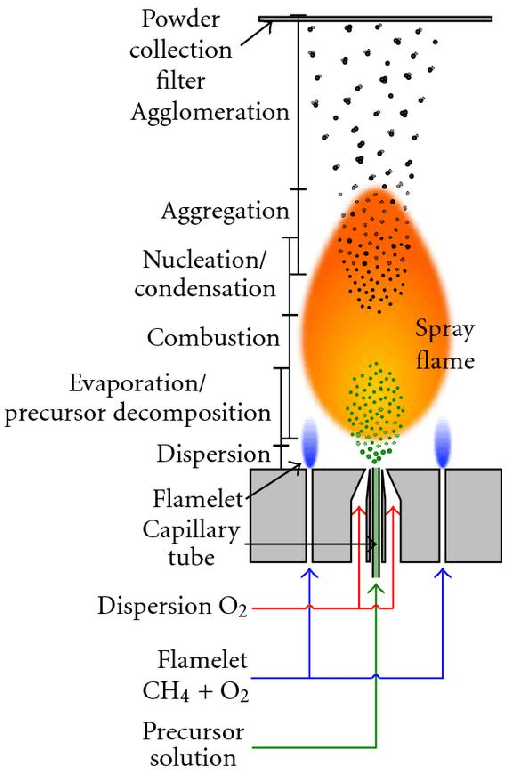

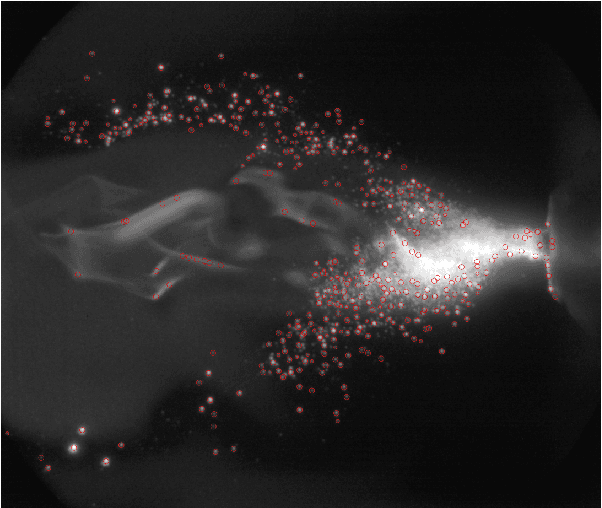
Abstract:Flame Spray Pyrolysis (FSP) is a manufacturing technique to mass produce engineered nanoparticles for applications in catalysis, energy materials, composites, and more. FSP instruments are highly dependent on a number of adjustable parameters, including fuel injection rate, fuel-oxygen mixtures, and temperature, which can greatly affect the quality, quantity, and properties of the yielded nanoparticles. Optimizing FSP synthesis requires monitoring, analyzing, characterizing, and modifying experimental conditions.Here, we propose a hybrid CPU-GPU Difference of Gaussians (DoG)method for characterizing the volume distribution of unburnt solution, so as to enable near-real-time optimization and steering of FSP experiments. Comparisons against standard implementations show our method to be an order of magnitude more efficient. This surrogate signal can be deployed as a component of an online end-to-end pipeline that maximizes the synthesis yield.
An Experimentally Driven Automated Machine Learned lnter-Atomic Potential for a Refractory Oxide
Sep 09, 2020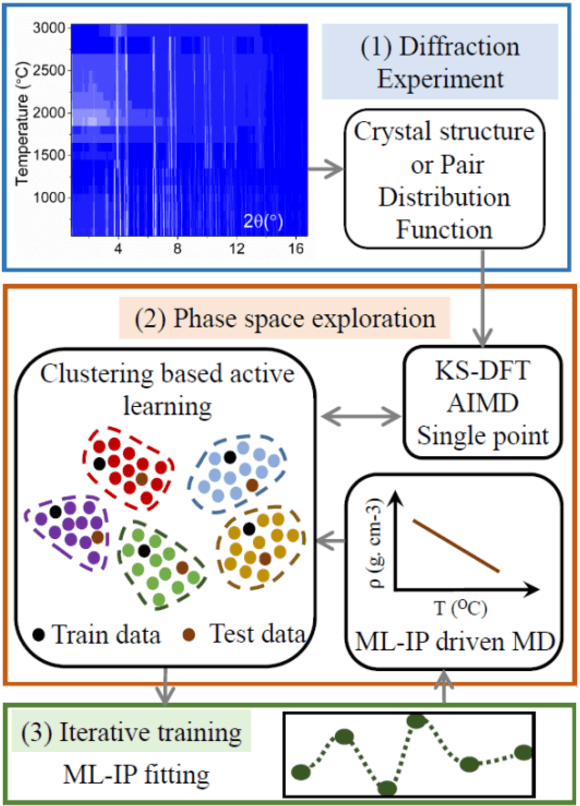

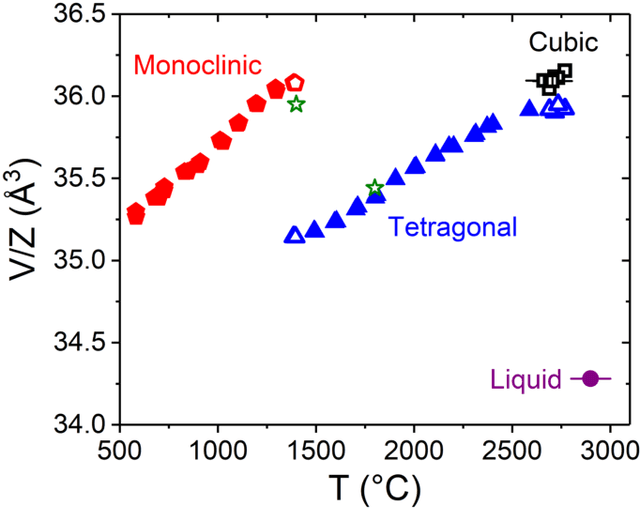
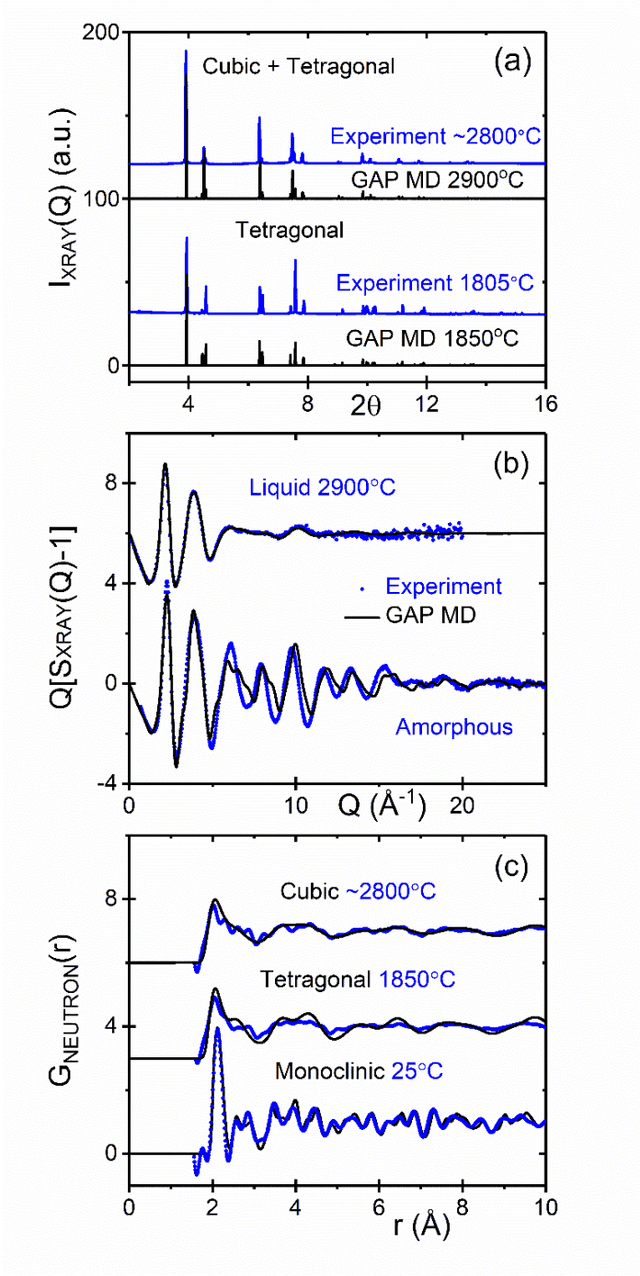
Abstract:Understanding the structure and properties of refractory oxides are critical for high temperature applications. In this work, a combined experimental and simulation approach uses an automated closed loop via an active-learner, which is initialized by X-ray and neutron diffraction measurements, and sequentially improves a machine-learning model until the experimentally predetermined phase space is covered. A multi-phase potential is generated for a canonical example of the archetypal refractory oxide, HfO2, by drawing a minimum number of training configurations from room temperature to the liquid state at ~2900oC. The method significantly reduces model development time and human effort.
Machine Learning Inter-Atomic Potentials Generation Driven by Active Learning: A Case Study for Amorphous and Liquid Hafnium dioxide
Oct 22, 2019



Abstract:We propose a novel active learning scheme for automatically sampling a minimum number of uncorrelated configurations for fitting the Gaussian Approximation Potential (GAP). Our active learning scheme consists of an unsupervised machine learning (ML) scheme coupled to Bayesian optimization technique that evaluates the GAP model. We apply this scheme to a Hafnium dioxide (HfO2) dataset generated from a melt-quench ab initio molecular dynamics (AIMD) protocol. Our results show that the active learning scheme, with no prior knowledge of the dataset is able to extract a configuration that reaches the required energy fit tolerance. Further, molecular dynamics (MD) simulations performed using this active learned GAP model on 6144-atom systems of amorphous and liquid state elucidate the structural properties of HfO2 with near ab initio precision and quench rates (i.e. 1.0 K/ps) not accessible via AIMD. The melt and amorphous x-ray structural factors generated from our simulation are in good agreement with experiment. Additionally, the calculated diffusion constants are in good agreement with previous ab initio studies.
 Add to Chrome
Add to Chrome Add to Firefox
Add to Firefox Add to Edge
Add to Edge